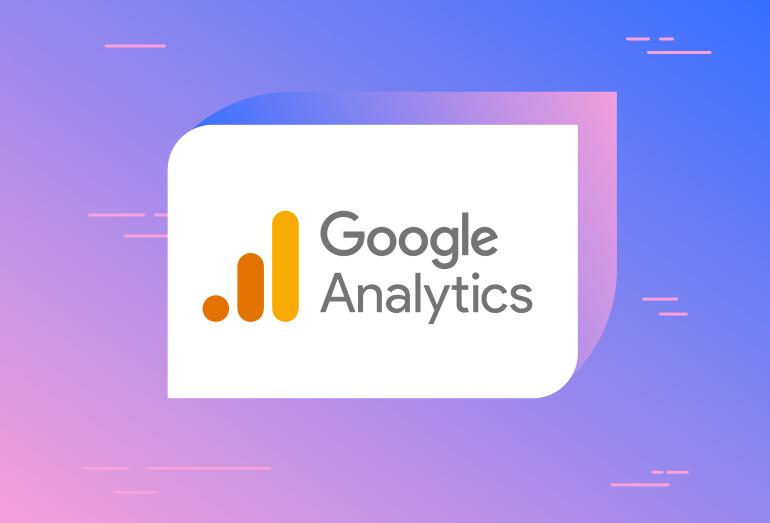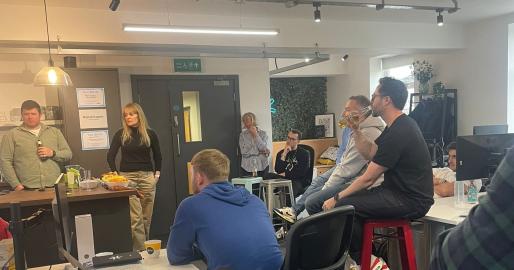
From 1st July 2023, Google Analytics Universal is being replaced by the next generation of analytics, Google Analytics 4 (GA4).
We recently hosted a webinar on GA4 that goes into more detail on what is discussed above, as well as a live demonstration so that you can see GA4 in action. Click here to watch the recording, or here to view the presentation.
In this blog, we’re breaking down everything you need to know about GA4, what it means for your business, and how you can prepare for the transition.
In the world of digital analytics, change is the only constant. As businesses strive to understand and optimise their online presence, they rely on robust tools to gather valuable insights. One such tool is Google Universal Analytics, which has been a staple for marketers and website owners for years. But now, after eight years, there's a new player in town - GA4. Are you ready for the transition?
GA4 represents a significant shift from its predecessor. It offers a more comprehensive and flexible approach to tracking and analysing user behaviour across multiple platforms and devices. The transition to GA4 is not just an upgrade but a paradigm shift in how we approach web analytics. Let's dive deeper into what GA4 brings to the table and why you should be prepared.
Unified Cross-Platform Tracking
One of the most exciting features of GA4 is its ability to unify data across various platforms. In today's digital landscape, users interact with businesses through websites, mobile apps, and even offline channels. GA4 enables you to track user interactions across these different touchpoints, providing a holistic view of your customer journey. By capturing data from websites and apps in a unified way, you gain a more comprehensive understanding of user behaviour and can make better-informed decisions.
Event-Driven Data Model
GA4 introduces an event-driven data model, which moves away from the traditional pageview-centric approach. Instead of focusing solely on pageviews, GA4 places emphasis on user interactions and events. Events can be anything from button clicks to video plays or form submissions, allowing you to track specific actions users take on your website or app. This shift gives you more granular insights into how users engage with your content, enabling you to optimise your marketing efforts accordingly.
Enhanced AI-Powered Insights
With GA4, Google has leveraged its expertise in artificial intelligence (AI) to provide enhanced insights. The new Analytics Intelligence feature uses machine learning algorithms to uncover trends, anomalies, and opportunities in your data automatically. This means you can spend less time sifting through complex reports and more time acting on valuable insights. GA4's AI capabilities have the potential to revolutionise how you analyse and optimise your digital strategies.
Prepare for the Transition
As GA4 gains momentum, it's crucial to be prepared for the transition. Here are a few steps to help you get started:
Set up a new GA4 property: Create a new GA4 property alongside your existing UA property. This allows you to collect data in both formats during the transition period. This needs to be completed by the 1 July 2023 deadline.
Understand the differences: Familiarise yourself with the differences between GA4 and UA. Take advantage of online resources, documentation, and guides provided by Google to learn about the new features and functionalities. Click here to access resources.
Plan your implementation: Analyse your current tracking setup and define your goals for GA4. Determine which events you want to track and ensure that your website or app is properly instrumented to capture the necessary data.
Explore reporting capabilities: GA4 has a new interface and reporting structure. Spend time exploring the different reports and metrics available to gain insights into user behaviour.
Seek expert guidance: If you're unsure about the transition or need assistance, Tribus can guide you through the process and can provide valuable insights and ensure a smooth migration.
Limitations of GA4 and How Tribus Can Help
Risk of losing historical data - Tribus can help organisations store that data before it is deleted.
Different data structures, interfaces, and tracking models can make comparison difficult - Tribus can work with organisations to set up new dashboards that allow for easy understanding of the new data.
GA4 is constantly evolving, so organisations are having to relearn and re-evaluate how best to use GA4 and GA4 data - Our experienced data team has built a robust process to ensure you don’t fall foul and will make the transition to GA4 straightforward.
Are you ready for GA4? The time to prepare is now.
Contact our Data Team to find out how we can support you through the transition to GA4









